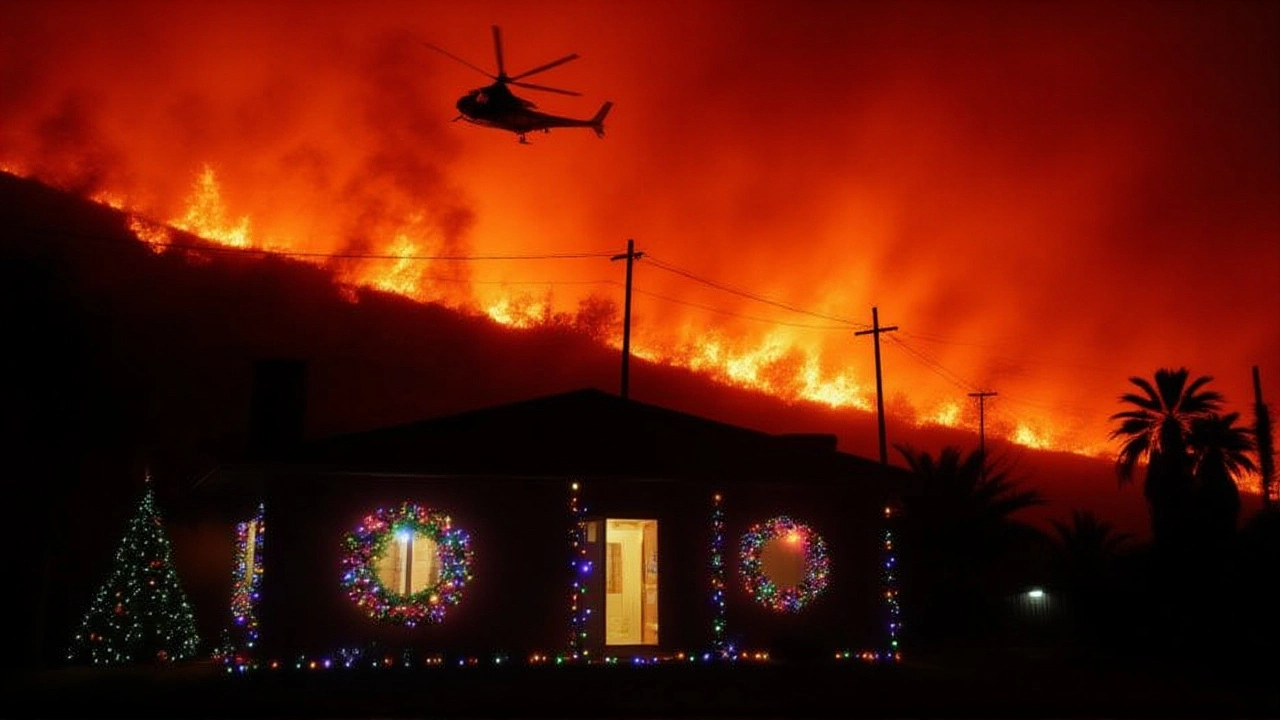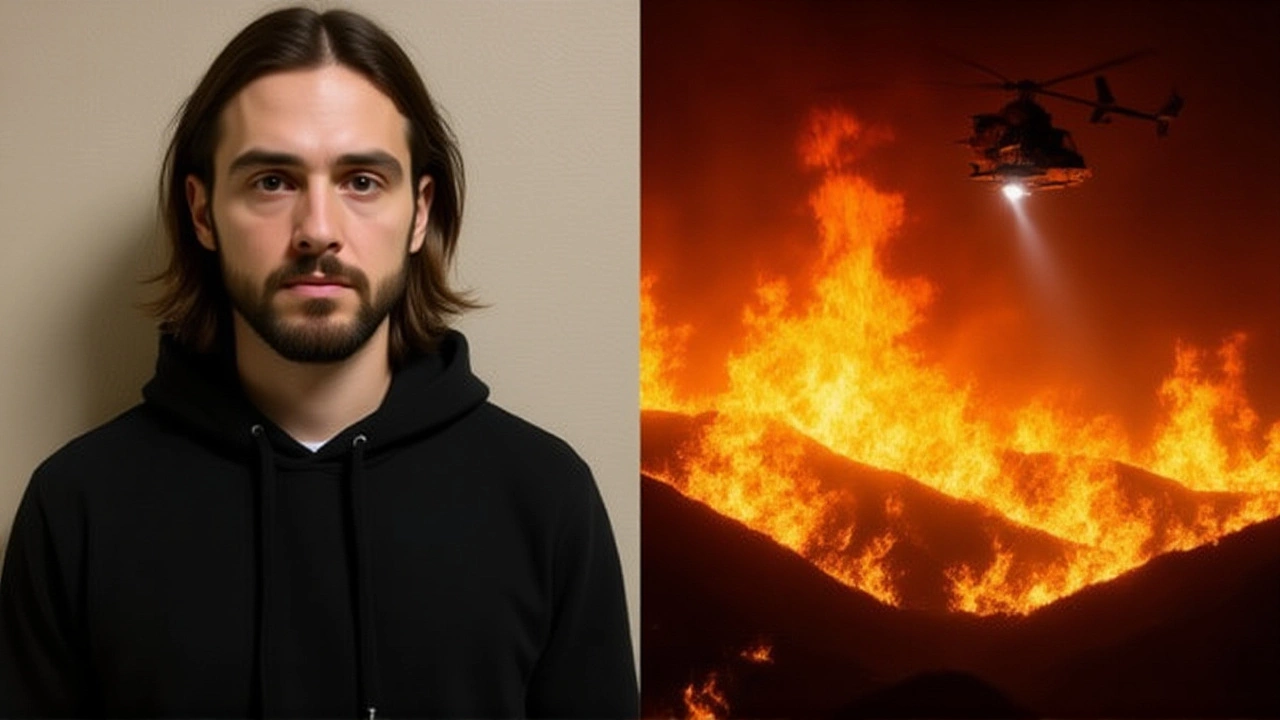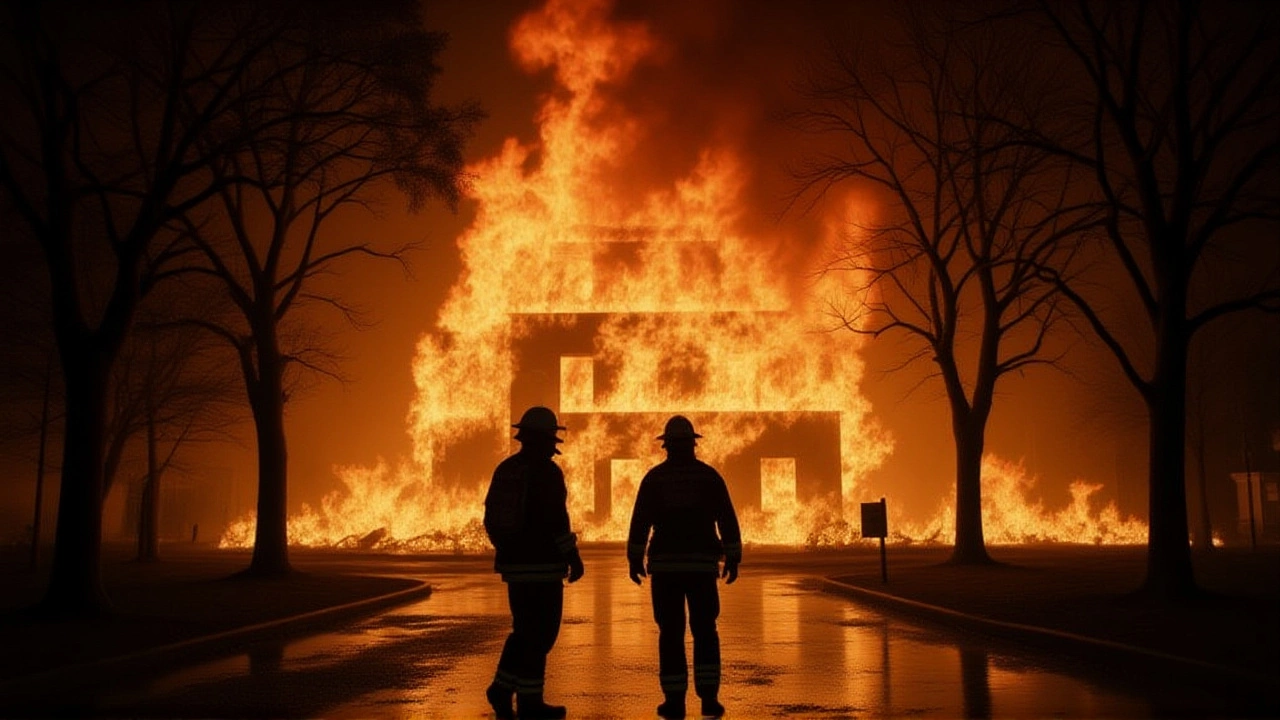Florida Driver Charged in Deadly Palisades Fire Arrested by Federal Agents

Federal agents arrested Jonathan Render Neck, a 29‑year‑old Florida resident, on Oct. 8, 2025, charging him with the intentional ignition of the Palisades Fire that ripped through Los Angeles on New Year’s Day, killing 12 and destroying more than a thousand homes. The arrest, made at Miami International Airport as the suspect tried to board a flight to London, marks the culmination of a nine‑month investigation led by the United States Department of Justice and the Federal Bureau of Investigation. Here’s why the story matters: it ties a high‑profile urban wildfire to a single arsonist, raises questions about driver‑app data privacy, and could reshape how federal authorities pursue interstate arson cases.
Background and cause of the blaze
The fire ignited at 12:01 a.m. PT on Jan. 1, 2025, in the upscale Palisades neighborhood near the Santa Monica Mountains. Initial reports suggested a stray cigarette, but investigators soon found a pattern of underground smoldering that lasted three to five days before bursting outward on Jan. 4. By the time the flames were fully visible, the blaze had consumed 1,847 acres and razed 1,147 structures, turning a quiet winter morning into one of California’s deadliest urban‑wildfire events.
Insurance analysts later put the insured loss at $2.7 billion, while the Los Angeles County Medical Examiner‑Coroner’s Office confirmed 12 fatalities ranging from 29‑year‑old Liam Torres to 87‑year‑old Eleanor Whitaker. The disaster also forced the closure of large swaths of the Santa Monica Mountains National Recreation Area, a federal asset that intensified the jurisdictional stakes for the investigation.
- Start date: Jan. 1, 2025 (underground), surface explosion Jan. 4.
- Area burned: 1,847 acres.
- Structures destroyed: 1,147.
- Fatalities: 12.
- Insured damages: $2.7 billion.
Investigation breakthroughs and arrest
Detectives first listed Render Neck as a person of interest in early February after combing through Uber driver logs. Between Dec. 28 and Dec. 30, 2024, the suspect’s GPS‑tracked vehicle dropped off passengers within a 0.3‑mile radius of the fire’s ignition point at coordinates 34.0347° N, 118.5097° W. Cross‑referencing those drops with cellular tower data placed him at the site moments before the fire’s first spark.
“We will prove beyond a reasonable doubt that he intentionally started this fire,” declared the lead federal prosecutor from the United States Department of Justice in a press briefing on Oct. 8. The statement was supported by 14.7 terabytes of digital evidence—including Uber’s trip histories, dash‑cam footage, and anonymized location pings—collected by the FBI’s Los Angeles Field Office.
On the day of the arrest, agents intercepted Render Neck at Gate 22 of Miami International Airport, just minutes before he was set to board American Airlines Flight 287 for London. The warrant, signed by a judge in the United States District Court for the Central District of California, listed one count of aggravated arson resulting in death under Title 18 U.S.C. § 844(f)(1).

Legal charges and court timeline
The indictment carries a maximum penalty of life imprisonment or, in rare circumstances, the death penalty. Render Neck’s first court appearance is slated for Oct. 10, 2025, at 10:00 a.m. PT before Magistrate Judge Patricia Donahue at the United States Courthouse, 312 North Spring Street, Los Angeles. Prosecutors say they will present the Uber data, eyewitness testimonies, and forensic analysis showing accelerant residues consistent with gasoline—materials that could only have been introduced deliberately.
Defense attorneys have filed a motion to suppress the Uber data, arguing that the driver‑app’s terms of service do not constitute a warrant‑issued search. Legal scholars note that the case could set a precedent for how ride‑share metadata is treated in federal criminal investigations, especially those that cross state lines.
Impact on victims and community
For the families left behind, the news is a mixture of relief and lingering anguish. “Knowing who did this doesn’t bring back our loved ones, but at least we have answers,” said Maria Alvarez, whose brother perished in the blaze. Community leaders have already begun a fundraising drive that has raised $4.3 million for displaced residents, aiming to cover temporary housing, counseling, and rebuilding costs.
The fire also sparked a broader debate about climate‑driven wildfire risk in densely populated coastal areas. City planners are now revisiting zoning regulations, and the Los Angeles Fire Department announced a $120 million upgrade to its early‑detection network, hoping to spot underground smoldering before it erupts.

What comes next?
Beyond the courtroom, the case will likely reverberate through policy circles. Lawmakers in California have introduced a bill that would require ride‑share companies to retain location data for at least two years, explicitly for use in criminal investigations. Meanwhile, federal agencies are reviewing their arson‑task‑force protocols, looking to integrate more advanced geospatial analytics.
For now, the focus remains on bringing the accused to trial and ensuring that the victims’ families receive the support they need. If the prosecution’s evidence holds up, the verdict could become a landmark moment in the fight against arson‑related terrorism.
Frequently Asked Questions
How does the arrest affect the families of the Palisades Fire victims?
Many families say the arrest provides a sense of closure, even if it can’t reverse their loss. Community groups have already raised over $4 million for emergency housing and counseling, and the legal process may help secure additional compensation from the suspect’s assets.
What evidence tied Jonathan Render Neck to the fire?
Investigators combined Uber driver logs showing trips within a 0.3‑mile radius of the ignition point, cellular tower pings placing him at the site moments before the blaze, and forensic samples of accelerants. Together, these pieces formed a digital trail that prosecutors say proves intent.
Could this case change how ride‑share data is used in criminal investigations?
Legal experts warn that the defense’s motion to suppress Uber data could force courts to clarify privacy boundaries. A ruling in favor of prosecutors may set a precedent that ride‑share metadata is admissible without a traditional warrant in cases involving interstate crimes.
What penalties could Render Neck face if convicted?
The charge of aggravated arson resulting in death carries a maximum sentence of life imprisonment, with the death penalty also on the table for federal cases. Sentencing will consider the magnitude of loss—12 lives and $2.7 billion in property damage.
What steps are local authorities taking to prevent similar fires?
Los Angeles officials are expanding underground heat sensors, tightening building codes in fire‑prone zones, and allocating $120 million to upgrade the city’s early‑detection network. The goal is to spot smoldering activity before it surfaces, reducing the chance of a repeat.

